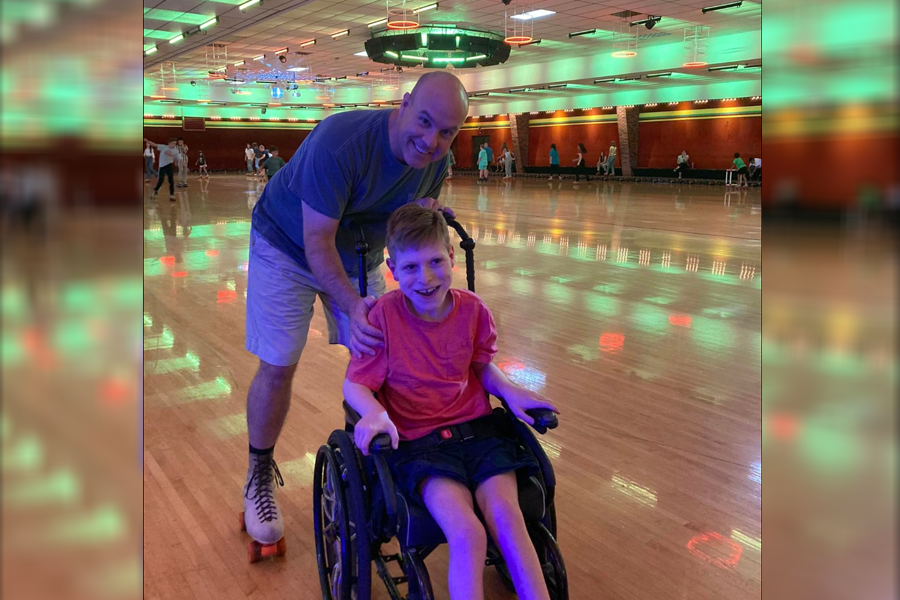As parents, we want to give our children the tools so they can be successful. Unfortunately, a class doesn’t become available when our children enter into late elementary school or middle school to teach them how to organize their many materials and plan ahead for their assignments, projects and tests. When my son and daughter started middle school, they were overwhelmed with how many responsibilities their teachers had now expected of them. They weren’t prepared to handle the demands of each class with a different teacher, a locker, so many notebooks to carry, and the weekly array of quizzes, tests, journals and so on.
For our children and adolescents with ADHD, it’s normal to coach and mentor with a more hands-on approach. Many parents continue to coach their young adult children while in college, and that’s okay. Keep in mind that each of our children’s journey is going to be unique. The goal is to make progress without the pressure (on you and/or your child) to achieve “X” goal by “X” age. That will only serve to frustrate the both of you.
Add Color
Our children with ADHD tend to have a visual-spatial learning style. What does this mean? At a very basic level, this means that they think in images, pictures and video, and not so much in words. Our children understand concepts in how they work and come together dynamically, not just based on the words on a worksheet or in a textbook. With that in mind, color coding notebooks and materials by subject is a great way to organize materials.
When working with students, I ask them to identify the color they associate with each of their subjects. For example, Math = red, Spanish = blue etc. Any and all materials related to that subject should be that color – down to the spiral notebook, folder, binder and pencil case holder. Anything related to Math is now red. Red = Math.
Why is this helpful? When your child is looking in her locker, in her backpack, or around her bedroom for her math notebook, she is not looking for the letters, “M-A-T-H.” Instead, she is looking for the color red. A visual-spatial learner has to consciously direct their attention to words. Processing color is more within their natural proclivity. Finding the Math notebook may come with greater ease when she is scanning her room for the color red.
Project and Plan Ahead
Planning ahead is not an easy task when you are living in the moment. Our kids want to prepare for their upcoming test right before it’s time to take it. They want to get an assignment started and finished all at once. Yet we know that as our children get older, the need for time management and planning ahead is essential because their assignments become more complex and they come with more parts.
Keep it visual by placing a whiteboard calendar in your child’s room. Once your subjects are color coded, write the upcoming test, quiz, paper or project in that color on the white board.
Don’t like a whiteboard? No problem, try an old school desk calendar (the large one). You can set it up on the wall or place on a desk and use it in the same way. Color code subjects as well as extracurricular activities and social plans. When your child is looking at the week ahead, they will be able to process in terms of color and associated subjects.
Break It Down
You and I both know that studying for long periods of time does not guarantee that our children are going to remember the information. In fact, sitting for any extended period of time almost ensures that they are going to be frustrated and learn close to nothing.
For myself, as an adult, and for my own children, I like breaking it down. For a homework assignment, create smaller assignments and get each chunk done. For example, if there are 30 math problems to complete, set a timer for 10-15 minutes and work on 10 problems at a time.
If your child is studying for a test, break down the content into sub-topics and review a chunk of information each night over multiple nights. This will provide repetition and improve consolidation of this information, making it more likely the information is transferred into long-term memory.
Let’s say that your child has a test on Friday. Ask your child to assess how many days of studying will be needed given the number of sub-topics on the upcoming test or quiz. If she says two days, then write “Math – Study” on the Wednesday and Thursday prior to the test on Friday using a red marker. Not only is the amount of information smaller but the amount of time spent studying is also shorter.
Building executive functioning skills is a necessity for middle school, high school or college students. As student responsibilities continue to grow, and knowledge acquisition increases, our childhood ability to hold simple information in memory will no longer work. This is when strategies and techniques come in to play that can help us build the skills to get things done without too much distress or worry.



























